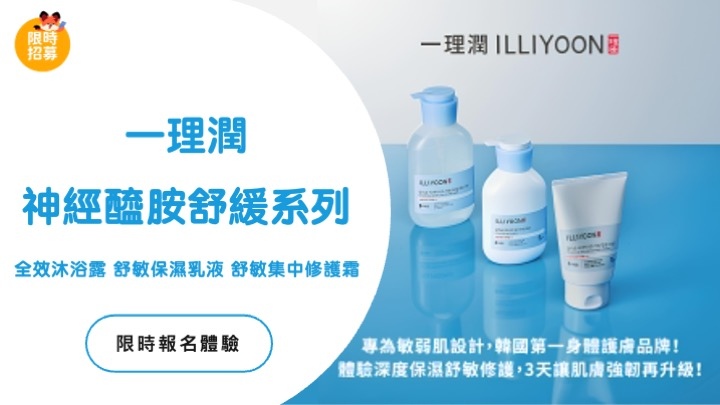close
The goal is a rapid reversal of airflow obstruction
Inhaled β2-Agonists
metered-dose inhaler therapy delivers the most drug to target airways, better than nebulized therapy.
Give aerosol treatments every 15 to 20 minutes or on a continuous basis
SC epinephrine and terbutaline are options for patients unable to coordinate aerosolized
IV β-agonist infusions offer no advantage over aerosolized or metered-dose inhaler–delivered agents
Corticosteroids
The peak anti-inflammatory effect occurs at least 4 to 8 hours after IV or PO administration
PO prednisone of 40 - 60 mg or IV methylprednisolone of 1 mg/kg is sufficient,
Discharged with 5-10 day nontapering course of prednisone (40 to 60 mg/d in a single daily dose or its equivalent)
or a 2-day course of oral dexamethasone (16 mg/d in a single daily dose)
Anticholinergics
Anticholinergics affect large, central air ways, whereas β-adrenergic drugs dilate smaller airways
Adding multiple doses of ipratropium bromide to a short-acting selective β-agonist
may improve bronchodilation and decrease the rate of hospitalization
MgSO4
IV magnesium sulfate can aid the management of acute, very severe asthma
The magnesium dose is 1 to 2 g IV over 30 minutes.
Nebulized magnesium is effective and may improve pulmonary function in severe acute asthma
when it follows aggressive β-agonist and corticosteroid therapy.
MgSO4 可以用吸的
NIPPV
Improves airflow and respirations
May decrease the need for tracheal intubation and result in clinical improvement
Mechanical ventilation
Mechanical ventilation does not relieve the airflow obstruction 為什麼 ??
it merely reduces the work of breathing and enables the patient to rest while the airflow obstruction is resolved
Methylxanthines
Aminophylline is no longer a first- or second-line treatment for acute asthma.
The most common side effects of methylxanthines are tachycardia, nervousness, nausea, vomiting, anorexia, and headache.
Steroid : Peak anti-inflammatory effect occurs at least 4 - 8 hrs after IV or PO administration
Initial dose of PO prednisone of 40-60 mg or IV methylprednisolone of 1 mg/kg
IV : 1 mg/kg every 4–6 h
Magnesium dose is 1 - 2 g IV over 30 minutes
- 沒發燒沒感染就不必用抗生素
- Aminophylline 沒什麼實證
- SpO2 維持在 92-94%
- 應避免過多輸液
- 嚴重可給支氣管擴張劑連續噴霧
- 嚴重可給 MgSO4 : 25-75 mg/kg IV Q6h
- The usual recommended dose is 25–75 mg/kg/20 min initially and then every 6 h as needed
在給予病人SABA 類藥物和氧氣治療的同時應立即開始評估 :
- 呼吸困難的程度 (病人可否說出完整句子, 或是只能說出隻字片語)
- RR, BP, SpO2
- 肺功能 PEF
- 亦須檢查病人是否有全身性過敏反應
* 對於氣喘惡化的病人, 不需常規進行胸部 X 光或血氧的檢查
亦不需常規開立抗生素治療
Uptodate :
COPD AE
PO : equivalent of prednisone 40 mg QD
prednisone 30 - 60 mg, once daily, to methylprednisolone 60 - 125 mg, two to four times daily
IV : equivalent of methylprednisolone 60 mg intravenously, one to four times daily
Asthma AE
PO : equivalent of prednisone 40 - 60 mg (or prednisolone 0.5 to 1 mg/kg) per day
ICU : methylprednisolone 60 - 80 mg every 6 to 12 hours
Hospital : methylprednisolone 40 - 60 mg every 12 to 24 hours
2015 ACLS Asthma
Epinephrine : 0.3mg SC q20 min * 3 times
Ketamine : Bronchodilatory
Intubation not solve the problem of small airway constriction !
- Auto-peep !
- Smaller tidal volume (6 - 8 ml/kg)
- Shorter inspiratory and longer expiratory time (1:4 ~1:5)
- For all asthmatic patients with cardiac arrest, and especially for patients in whom ventilation is difficult,
the possible diagnosis of tension pneumothorax should be considered
< 評估 DNR 惹 >
留在 Level I :
- 極少有氣喘症狀
- 未曾因氣喘而半夜醒來
- 過去一年未曾發生惡化, 且FEV1正常的病人
進入 level II : 建議以下氣喘病人應規律使用低劑量 ICS
- 每月發作 > 2 次
- 每月因氣喘而醒來 > 1 次
- 氣喘症狀,並具有AE risk factor
如:最近12 個月曾因氣喘而需使用口服型類固醇治療,
FEV1較低, 曾因氣喘而住進加護病房治療
若病人經常出現擾人的氣喘症狀,或每週因氣喘醒來一次以上
(特別是具有可能引發惡化的危險因子時), 則應考慮 升階治療
(例如中/高劑量 ICS,或 ICS/LABA)
針對初始臨床表現就已經是無法控制的嚴重氣喘,或曾發生過急性惡化的病人
應給予短期口服型類固醇,並開始規律使用控制型藥物
(例如高劑量 ICS, 或中等劑量的 ICS / LABA)
治療2-3 個月後或當有臨床急迫性時, 應重新檢視病人的治療反應
當氣喘控制良好達三個月以上時, 可考慮降階治療
第一階治療
- 症狀發作時使用 SABA
Salbutamol (Ventolin 泛得林)
Fenoterol (Berotec 備勞喘)
- 平時不需使用控制型藥物
對於具有惡化風險的病人, 可給予低劑量 ICS 規律治療
如:Fluticasone (Flixotide 輔舒酮)
第二階治療
- 症狀發作時使用 SABA
- 規律使用 低劑量 ICS
- 或使用 LTRA : 效力較 ICS 差
Montelukast (Singulair 欣流 4, 5, 10 mg/tab)
一天一次睡前服用, 10 mg→15歲以上, 5 mg→6-14歲, 4 mg→2-5歲
- 或使用 ICS + LTRA
- 或使用低劑量 Theophylline (茶鹼), 不建議用於 6-11歲小兒
第三階治療
- 症狀發作時使用 SABA
- 首選用藥為 低劑量 ICS + LABA
Symbicort 吸必擴 (1-2 dose QD-BID;Budesonide/Formoterol)
Seretide 使肺泰 (2 dose BID;Fluticasone/Salmeterol)
Foster 肺舒坦 (1-2 dose BID;Beclomethasone/Formoterol
未滿 18歲不建議使用, 開封前冷藏, 開封後 25 ℃ 下存放 5 個月
- 或使用 中 / 高劑量 ICS
- 或使用 低劑量 ICS+ LTRA
- 或 低劑量 ICS + Theophylline
第四階治療
- 症狀發作時使用 SABA
- 首選為 中高劑量 ICS + LABA
- 或是選擇加上 LAMA = (中高劑量 ICS + LABA+LAMA)
Tiotropium (Spiriva 適喘樂 2.5 mcg/puff, 2 puff QD),之前只用於 COPD的藥物,
在經歷臨床試驗研究後已取得治療氣喘的適應症,
適應症增加"適用於已接受吸入性皮質類固醇
(每日劑量相當於≥800 μg Budesonide)與長效 β2促進劑而仍未控制症狀,
且過去一年發生一次或以上嚴重惡化之成人支氣管氣喘患者,
作為維持性支氣管擴張劑附加治療"
- 或使用 高劑量 ICS+LTRA
- 或使用 高劑量 ICS+ Theophylline
第五階治療
- 中高劑量 ICS + LABA 再加上併用療法 :
* 霧化吸入型 tiotropium (12 歲以上且有惡化病史)
* 抗 IgE 單株抗體 omalizumab (嚴重過敏性氣喘)
* 抗 IL-5 單株抗體 mepolizumab (12 歲以上且罹患嚴重嗜酸性白血球增多性氣喘)
Anti-IgE antibody
Omalizumab (Xolair 喜瑞樂 150 mg/vial 台灣人發明的~)
皮下注射, 劑量依照 IgE的測量值和體重決定
75-600 mg 每二周或每四周給藥一次
1 vial 150 mg健保要價 $15856
- 或中高劑量 ICS + LABA + LAMA
- 或中高劑量 ICS + LABA + OCS
文章標籤
全站熱搜


 留言列表
留言列表


